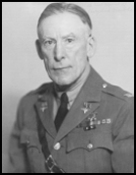
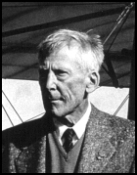
1877-1965 AKA Frank Purdy Lahm |
 |
 |
by Edith Dodd Culver |
Courtesy Phillips Petroleum Company |
|
In commemoration of Lieutenant Lahm's triumph, the Aero Club of America instituted the Lahm Aeronautic Cup contest for a $1,500 silver trophy made by Black, Starr, and Frost of New York. The competition was open to all licensed balloonists of every nation, but all trials for the cup had to begin in the United States and all contenders had to belong to the Aero Club of America. Tradegy, however, stopped the demonstrations. During a flight on September 17, the right propeller fouled a guy wire and broke off, causing the machine to crash from a height of 75 feet. Orville Wright and his passenger, twenty-six-year-old Lieutenant Thomas Selfridge, were taken to the Fort Meyer Hospital. Orville Wright was seriously injured; but Selfridge was so grievously hurt that he died that evening---the first person in the world to be killed in an aeroplane accident. Thus the completion of the Army tests had to wait until the following year. If Selfridge had lived, his experience as an engineer and his background as a graduate of West Point, not to speak of his devotion to flying, would have served his country well. In 1965, his name was inscribed in the National Aviation Hall of Fame at Dayton. |
via email from Avelino Zapanta, 8-28-06 The first flyers in the Philippines were actually Americans led by Frank Lahm, Jr. the first flying student of the Wrights and first in the US. He was tasked by the US Army to set up a flying school in Corregidor using Burgess-Wright aircraft and taught some American soldiers how to fly. The first batch of 25 Filipino flyers were trained by Joseph Stevenot and Alfred Croft in 1920 under the Curtiss Flying School to become the pilots of the country's first private airline, Philippine Airways Service, Inc. and the first government airline, the Philippine Air Service. Some of those 25 had very colorful exploits like flying from Manila to Madrid in the 1930s, a first for any Asian pilots. It's a long story, but it will be in my forthcoming History of Philippine Aviation. Best regards, Lino Zapanta |
Out of curiosity, I searched the name "Alfred Croft" using Google and found these two very interesting links. |
|
"He enrolled in November 1919 at the Philippine School of Aviation of the Curtiss Aeroplane and Motor Corporation at Camp Claudio, Rizal, as a civilian, not a military, trainee. Among his classmates were Capt. Zablan and Lt. Fernando after whom two airfields have been named, together with Lts. Juan Calvo and Leoncio Malinao. They received intensive ground instruction before they were allowed to fly solo. After riding in a Curtiss Seagull with his instructor, Alfred Croft, on November 9, 1919, he was allowed to make his first solo flight exactly two months later, making him the first Filipino pilot to accomplish the feat. He made his first solo flight in January 1920 in a Curtiss Seagull in two rounds above Manila Bay and thus qualified as the first licensed civilian pilot in the Philippines.". You can read the entire, fascinating story of this pioneer by clicking on the title above. |
|
1920 - 1921 |
|
The presentation was made by EB President "Pete" Goff who also introduced all of the Early Birds in attendance --- Reinhardt Ausmus, Horace Tuttle, Stanley Vaughn, Charles Arens, Roderick Wright, David Young, Howard Wehrle, and William Denehie. A picture of the plaque was not available when the June Chirp went to press but will be included in the next issue. The inscription reads: Presented to Brigadier General Frank P. Lahm,,, In recognition of his life-long devotion to aviation and aeronautical science. Taught to fly in the first Military airplane, Signal Corps #1, at College Park, Maryland, in 1909,,,Awarded by the "Early Birds," an organization of those who flew solo before December 17, 1916. The cadets gave General Lahm a resounding cheer when he was introduced and stood at attention during the presentation. Col. Cochran, Commander, WPAFP, gave a luncheon for General Lahm and the visiting Early Birds at the Officer's Mess, later taking them on a tour of the Air Force Museum. Ernie Hall and Beckie Havens sent congratulatory wire that were read during the ceremonies. June, 1960, Number 63 |
Army Airman |
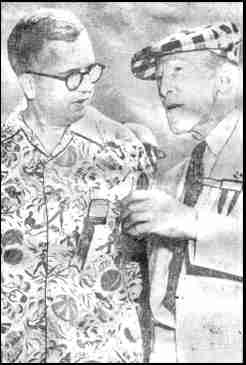 |
|
DISTINCTION--Retired Brig. Gen. Frank P. Lahm, above, now living in Hollywood, was first military flying
student of Wrights. He holds pilot license No. 2. Left, Vern Haughland, AP reporter. --Wide World Photo Sun., Oct. 4, 1953 Sec, IV--5 From the collection of Lester F. Bishop Courtesy of David Balanky |
|
|
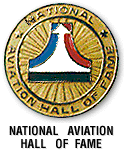 |
|
I heartily recommend that you visit the homepage and plan to spend some time on this wonderful site. |
|
|
|
|
|
Geography and Map Division First and East Capitol Streets, S. E. Washington, DC 20540 (202) 707-6277 Lahm, Frank Samuel, 1846-1931. MS 59- 226. Papers; ca. 1850-1931; 1,000 items. Businessman and balloonist. Correspondence, logs, and barograph records of Lahm's balloon ascensions. Other papers include lectures, memoranda, photographs, clippings, a biographical sketch, and part of an unfinished history of aeronautics. There are also writings and diaries of Henry Weaver, who in 1905 investigated for Lahm the achievements claimed by the Wright brothers. Correspondents include Patrick Y. Alexander, Griffith Brewer, R. P. Skinner, Ida and Melvin Vanniman, Walter Wellman, and Orville and Wilbur Wright. Finding aid available. To access the site, just click on the title above. |
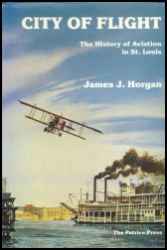 |
The History of Aviation in St. Louis by James J. Horgan The Patrice Press |
 |
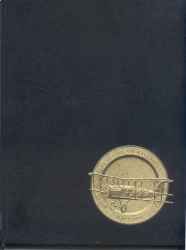 |
The Story of the Early Birds by Henry Serrano Villard Thomas Y. Crowell Company |
by Edith Dodd Culver Cub Flyers |
|
Brigadier General Frank P. Lahm, the second to solo in the Signal Corp's initial flying machine, died of a stroke at Sandusky, Ohio, on
July 7, 1966---eighty-five years old. |


|